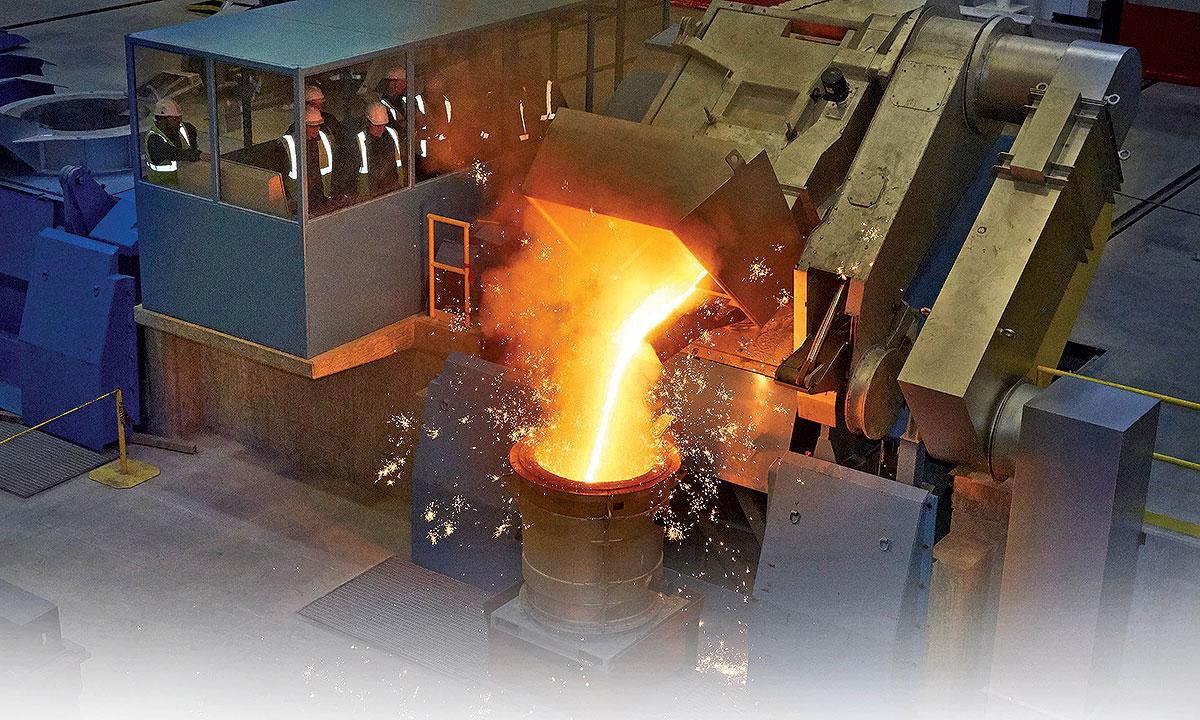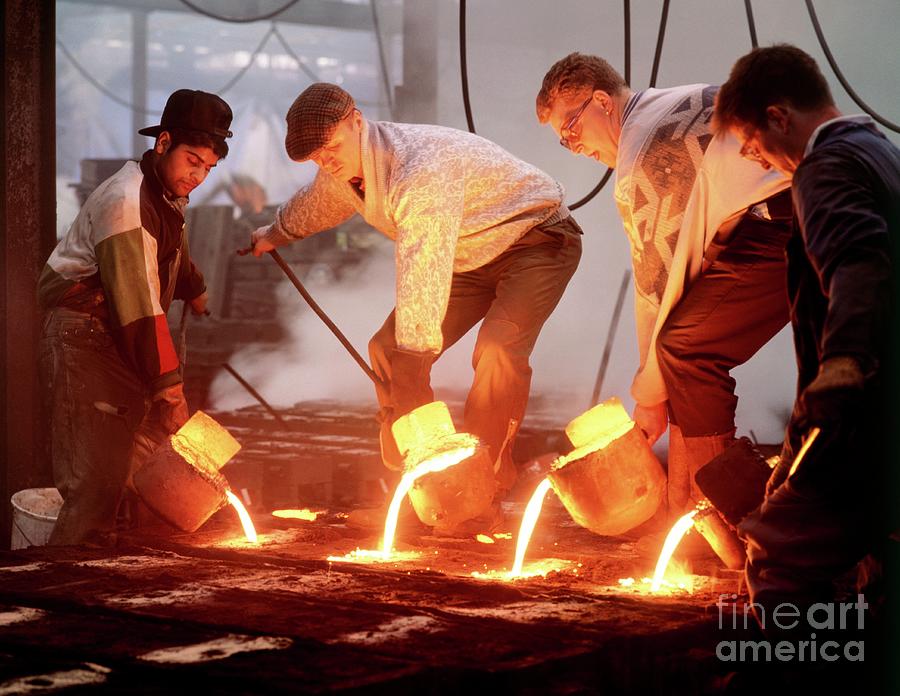Top Technological Advances Transforming the Metal Foundry Sector
Wiki Article
Understanding Metal Casting Processes: Innovations and Fads in the Foundry Sector
The foundry sector is experiencing substantial makeovers driven by technical innovations. Technologies such as 3D printing and synthetic intelligence are reshaping metal casting procedures, boosting efficiency and precision. Sustainable techniques are acquiring traction, emphasizing the relevance of environmental obligation. On top of that, the intro of sophisticated materials and automation is improving general casting high quality. These developments recommend an essential shift in the industry, elevating inquiries regarding future directions and effects for suppliers.Improvements in 3D Printing for Metal Casting
Recent innovations in 3D printing technology have substantially transformed the landscape of steel casting. The combination of additive production methods has actually allowed the quick production of facility patterns and molds that were impossible or previously hard to achieve with standard techniques. By utilizing products such as sand and steel powders, producers can develop elaborate geometries that boost design adaptability and minimize material waste. This development not just expedites the prototyping process however additionally enables for the modification of components tailored to details applications.
Furthermore, 3D printing promotes shorter preparation, which is necessary in markets calling for quick turnaround for parts. The modern technology likewise sustains the manufacturing of lightweight structures, thus enhancing energy efficiency in final product. Therefore, the foundry sector is witnessing a shift towards even more lasting methods, driven by the effectiveness and precision supplied by these modern-day 3D printing strategies in steel casting procedures.
The Function of Artificial Knowledge in Precision Manufacturing
As markets increasingly adopt innovative production modern technologies, expert system (AI) is playing a critical role in enhancing precision manufacturing processes. AI algorithms analyze large datasets to identify patterns and optimize manufacturing criteria, causing boosted precision and effectiveness. In metal casting, AI aids in predictive upkeep, lowering downtime by projecting tools failings before they occur.AI-driven simulations make it possible for manufacturers to design the casting process, refining styles and minimizing issues. Equipment understanding methods enhance top quality control by spotting anomalies in real-time, therefore ensuring that only items satisfying rigorous specs proceed via the manufacturing line.

Lasting Practices in the Foundry Sector
Sustainability has become a critical focus in the foundry market, motivating makers to take on methods that lessen ecological impact while maintaining efficiency - Aluminum Foundry. One prominent approach includes the recycling of materials, particularly metals, which significantly decreases waste and power usage. Factories are significantly carrying out closed-loop systems, allowing for the reuse of sand and various other casting products, consequently decreasing the demand for virgin sourcesAdditionally, energy-efficient modern technologies, such as electrical heating systems, are getting grip, as they lower greenhouse gas emissions compared to typical approaches. Many shops are discovering the use of environmentally friendly coatings and eco-friendly binders to reduce hazardous byproducts. Worker training on sustainable methods has actually likewise ended up being crucial, fostering a culture of environmental responsibility within companies. On the whole, these sustainable techniques not only add to ecological conservation but likewise boost the long-lasting stability of the foundry market in a significantly eco-conscious market.
Developments in Products for Boosted Casting Quality
With the constant advancement of the foundry sector, innovations in materials have actually come to be vital for boosting casting top quality. Advanced alloys and composite materials are increasingly being used to enhance mechanical homes and decrease flaws in spreadings. These products often provide exceptional strength-to-weight proportions and improved resistance to rust and wear, resolving the needs of modern-day applications.Additionally, the unification of nanomaterials is obtaining grip, enabling finer microstructures that bring about boosted surface area coatings and dimensional precision. Aluminum Casting. 3D printing modern technologies additionally contribute in generating intricate geometries with marginal waste, making it possible for making use of customized materials that were formerly testing to cast
In addition, the advancement of ecologically friendly binders and additives contributes to sustainable practices while keeping high-grade end results. Jointly, these advancements not just boost the efficiency of cast products yet likewise align with the sector's change towards sustainability and performance.
Automation and Robotics in Metal Casting Processes
Automation and robotics are transforming metal casting procedures by simplifying operations and enhancing precision. In modern-day foundries, robot systems are utilized for tasks such as mold and mildew handling, pouring, and ending up, considerably decreasing human treatment. This not only minimizes the threat of accidents yet also assures consistent top quality in production.Automation modern technologies, such as computer mathematical control (CNC) devices, promote elaborate layouts and intricate geometries that were previously testing to attain. Real-time information analytics make it possible for makers Aluminum Foundry to maximize and monitor processes performance continually.
The integration of automation results in boosted performance and performance, allowing shops to fulfill expanding market demands while minimizing preparations. As the industry accepts these innovations, the workforce is also progressing, calling for brand-new skills to operate and maintain advanced machinery. In general, the fostering of automation and robotics is an essential pattern forming the future of steel casting processes.
Often Asked Concerns
What Is the History of Metal Casting Methods?
Metal casting methods date back to ancient civilizations, with evidence of bronze casting in Mesopotamia around 3000 BCE. Over centuries, methods evolved significantly, integrating developments in materials and innovation, forming modern commercial techniques.Just How Does Metal Casting Effect the Atmosphere?
Metal casting considerably impacts the setting with energy intake, discharges, and waste generation. Advancements in lasting methods and technologies intend to reduce these results, promoting even more environmentally pleasant methods within the market.What Precaution Are Important in Foundries?

What Prevail Issues in Metal Casting Products?
Common defects in steel casting items include porosity, shrinkage, misruns, cold shuts, and surface area flaws. These problems occur from factors such as improper temperature level control, poor mold and mildew layout, and contamination throughout the casting process.Exactly How Do Foundries Make Certain High Quality Control in Casting Processes?
Factories execute extensive top quality control steps with regular inspections, standardized screening, process monitoring, and adherence to sector requirements. These methods aid determine problems early, ensuring the honesty and reliability of the last casting products.Innovations such as 3D printing and synthetic knowledge are reshaping metal casting processes, boosting effectiveness and precision. Recent advancements in 3D printing modern technology have considerably changed the landscape of metal casting. Automation and robotics are changing metal casting procedures by simplifying operations and enhancing precision. Metal casting techniques day back to ancient human beings, with evidence of bronze casting in Mesopotamia around 3000 BCE. Typical defects in steel casting products consist of porosity, shrinkage, misruns, chilly shuts, and surface flaws.
Report this wiki page